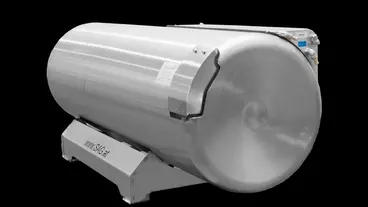SAG develops truck cryo-tank system for liquid hydrogen

The Salzburger Aluminium Group (SAG) has developed the truck cryo-tank system for liquid hydrogen (LH2).
The company is now using its technological leadership in the field of cryo-tank solutions for LNG-powered trucks (liquid natural gas) to develop the first truck cryo-tank system for liquid hydrogen (LH2).
Prototyping for truck cryo-tank system to start soon
Experts and vehicle manufacturers agree that hydrogen will be an important alternative fuel in the near future. However, the storage of hydrogen - especially in liquid form - poses a number of technical challenges. One of the biggest challenge SAG’s engineers are facing is the extremely low temperature of minus 250°C at which liquid hydrogen must be stored. This and also the requirements for size and weight of the tank system require technical excellence. The development is already so far advanced that prototyping will start in a few months and test phases will begin. Based on the results obtained, the LH2 cryotank made by SAG will go into series production from 2027 and will make a valuable contribution to CO2 reduction in the transport sector.
More range with liquid hydrogen tanks
Hydrogen is regarded as the fuel of the future and - when produced via electrolysis using green electricity - offers a CO2-neutral alternative to diesel fuel. During the conversion of hydrogen and oxygen into electrical energy, which takes place by means of a fuel cell, only water and heat are produced as "by-products". Since only a relatively short range can be achieved in truck transport with compressed gaseous hydrogen, OEMs are very interested in tank solutions for liquid hydrogen. With the cryo-tank solution developed by SAG, it will be possible to achieve around twice the range of gaseous H2 in the future. Trucks equipped with two liquid hydrogen tanks of maximum size registered in Europe should be able to cover up to 1.000 kilometers after a full tank. The decisive factor here is the high energy density of the LH2, with which such long ranges can be achieved.
High transport volume
"The low space requirement of the LH2 tank systems which we have developed enables a high transport volume and causes an extremely low payload loss. As a prototype for the LH2 tank system, a double-walled, vacuum-insulated stainless steel tank is being developed. It offers the highest possible hydrogen capacity in the existing installation space. A unique valve system designed for the extremely low temperatures will enable safe refuelling and reliable supply of hydrogen to the fuel cell," says Johannes Winklhofer, head of SAG's R&D department.
CEO Karin Exner-Wöhrer adds: "Due to the EU legislation, which stipulates that car manufacturers must equip around 50 %t of the vehicles produced with zero-emission drives by 2030, there is great interest in a future-oriented storage solution for liquid hydrogen. We can make full use of our know-how in the cryo tank sector, which we bring with us from LNG tank production, and open up a new business field that holds great potential for the future - both for SAG and for climate protection."

The new forming machine from Leifeld Metal Spinning allows production of aluminium hydrogen tanks that meet the requirements for hydrogen-powered vehicles.

Researchers at Chalmers University of Technology have developed a new aluminium truck front concept to significantly reduce fatal crashes in car-truck collisions.

Robust radar sensor measures liquid metal at temperatures up to 1,600 °C with high precision and measuring rate – without active cooling.
